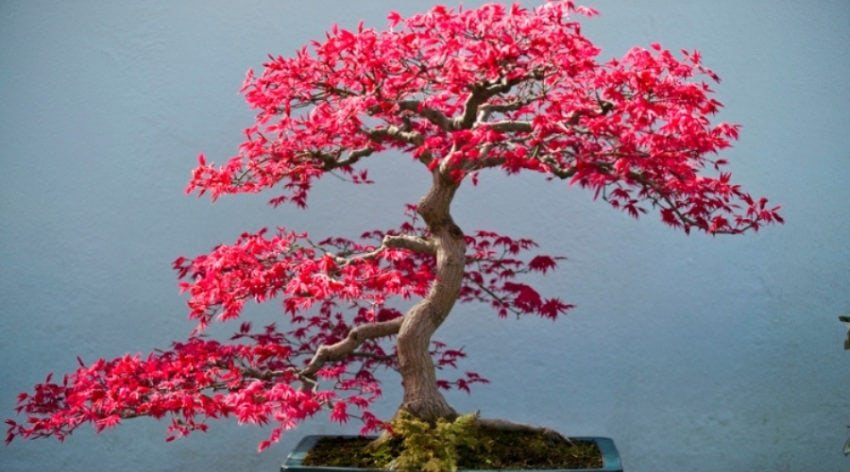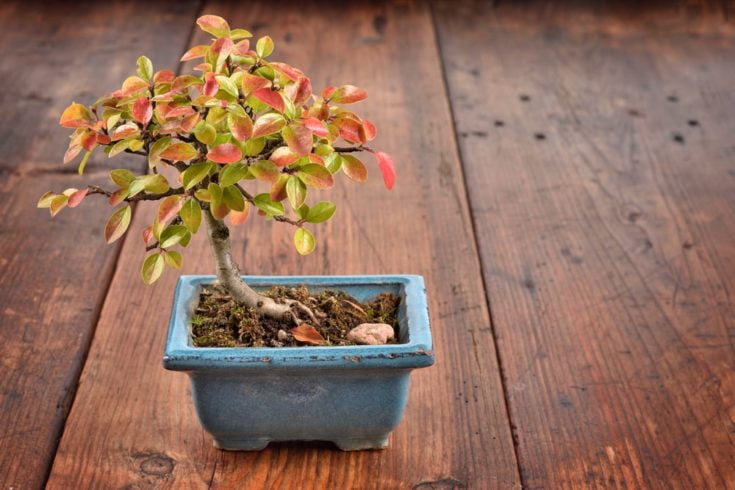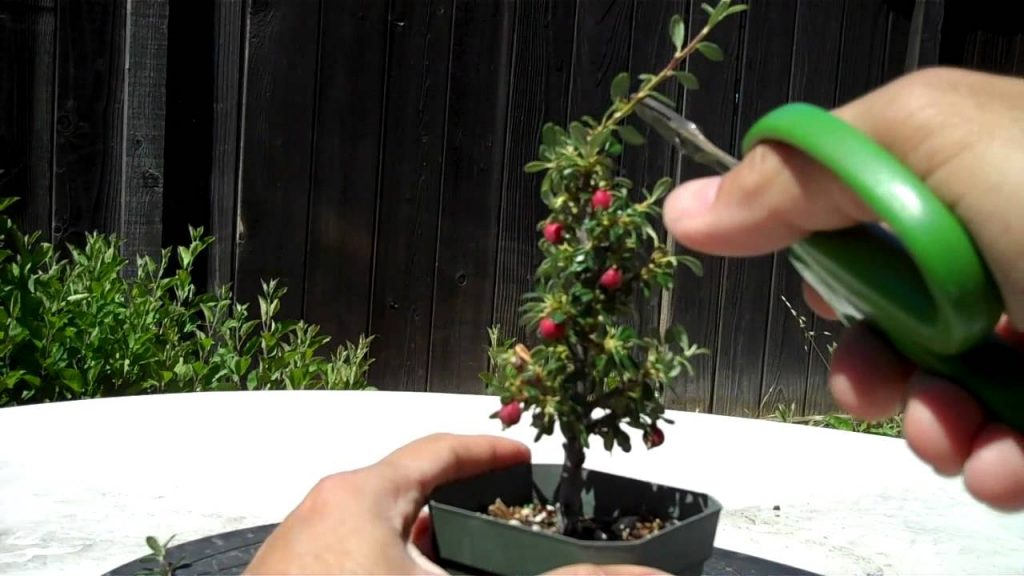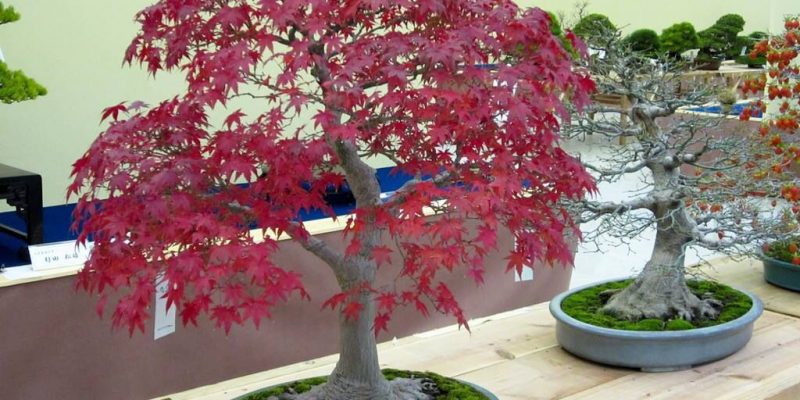Bonsai is an elegant art form that uses the plant’s natural growth to cultivate it in the little form to its complete capability.
It is shaped and pruned to make attractive canopy forms and vibrant flowers grown adequately in lightweight containers.
As cotoneaster bonsai helps bring harmony and peace, it is quite famous among gardeners; however, it needs patience, and you can place it outdoor or indoors.
If you have appropriate knowledge of how you can grow bonsai, these can prove to be very healthy, robust, and you can quickly take care of them.
This article will give you all the details on how you can grow cotoneaster bonsai and how you can take proper care of it.
How Can You Grow Cotoneaster as A Bonsai?

You must get to know first the kind of cotoneaster that you desire to grow. The selections can be deciduous berry in the winters and fiery foliage in the fall.
At the same time, in the event you will offer cool temperatures as the winter settles in, the evergreen selections will remain green throughout the year. Otherwise, this will also lose the leaves.
Required Materials
It is not a complicated species for cultivation, and numerous woody plants can be either propagated from cuttings or grown from the seeds.
You need to determine in the event you desire to begin from cutting or seed after you select the variety. You can get the seed from the ripen fruit and permits it to experience the seasons as in the event you left that in nature.
It would help if you permitted it to dry and cool for several months in the refrigerator before creating a suitable seed medium in this.
In contrast, to begin from seeding, cutting propagation is an easy step and a rapid one. In mid to late summer, you need to take cuttings from semi-mature new growth.
You must position it straightly in a growing medium after you dip it in a rooting hormone and permit it to take root over the time of several months before transferring.
Requirements for soil
Needs for bonsai soil are essential as they must give excellent drainage and a better binding of nutrients.
In addition to this, as some part of the experience, bonsai also portrays the root’s formation. It would help if you focused on the provided soils to stunt the plant’s growth without harming the health.
Soils assist in offering different surface regions for nutrients and moisture and splitting the roots to offer interest. This also gives drainage, aeration, and nutrient availability.
Instead of buying an already-mixed soil, most of the individuals are in favor of creating their bonsai mixture.
You will require a blend of grit, pumice, organic potting soil, lava rock, and Akadema –a baked and right substance of clay that is perfect for drainage of water and assists in the binding of the nutrients.
The Art of The Container
The container is essential in which the bonsai resides. You must carefully select the colors, textures, shape, and size to help your plants grow as it matures, supports the form of art, and complements the form.
When you select the container for the bonsai, you need to consider guidelines, all of which implement the plants’ growth and shape training along with its maintenance and maturity.
You must know the below-mentioned factors when you select the pot:
- Economical and Reusable: Drainage mesh built into pot + small holes prevent soil from falling...
- Bonsai Plastic Pots: Used for Bonzai trees either indoors or outdoors that are in training. Also...
- Heavy Duty Plastic Pots: Includes humidity trays made from poly-resin plastic. These plant starter...
- Incredible Durability: These plastic large planters will retain color through rain, snow, and sun....
- Bonsai Outlet has always been committed to providing customers with high quality and will continue...
- Great Value - Includes 4 glazed bonsai pots and 4 soft mesh drainage screens as shown in images
- Perfect Starter Pots - Set of different shapes; Enough for seedlings, cactus, succulents and mini...
- Decorative Items - Makes lovely table decoration, window ornaments and more; Can also be used as...
- Excellent Material - Made of top-quality ceramic footed with drainage holes
- Comes with 4 soft mesh drainage screens (Size: 2 x 2 inch)
The pot’s depth must be approximately identical to the trunk’s thickest portion straightly above the roots. It is the portion of the trunk that is familiar with the name of the nebari.
This balance must improve the visual effects in the container’s moderate and natural growth.
A rectangular or oval container must be about 2/3 throughout the tree’s total height. A round or square pot must be about 1/3 throughout in contrast to the tree’s length.
There is a need to alter the pot size when the canopy becomes taller or broader or as the tree gets maturity.
To permit the extra uptake of nutrients for the energy required to grow fruits, fruit-bearing trees can be having a somewhat deeper pot. It is possible that as part of the gorgeous charm, cotoneaster bonsai bear berries, and it is worth to consider.
It will help if you went for a more bottomless pot if you have a plant that is not bearing properly despite the appropriate pruning.
How Can You Maintain Your Cotoneaster Bonsai?

Taking care of the cotoneaster bonsai entirely depends on you. It will remain graceful, miniature, and healthy for numerous years with proper care and maintenance.
The charm of cotoneaster bonsai will be enhanced around the years as it is a living miniature tree.
Watering
You can never neglect the watering schedule of the bonsai. When you see that soil looks dry, you need to apply water to that and do not permit the soil to dry entirely.
It is mandatory to water one time a day if the bonsai is getting the full sun. The watering schedule can differ with the soil, pot’s size, and kind of the bonsai tree.
You must know the water needs of every tree and modify the accommodation schedule. Until and unless you acknowledge the bonsai tree’s needs, it is a great idea to make use of moisture water.
You must do water with the assistance of a hose attachment or watering that can softly release the water by not disturbing the soil. You need to apply water till it starts to get running out of the bottom’s holes of the pot.
Humidity
If your bonsai is inside at the time of winters, it is highly suggested to position it in the shallow tray packed with a gravel layer with the inclusion of the water.
As the water evaporates, it will give more moisture throughout the tree and lessens the moisture amount lost to the latest heating systems.
Fertilizing
If you want cotoneaster bonsai to remain attractive and healthy, it is essential to do the fertilizing.
It is essential to refill the soil’s nutrient supply regularly as the bonsai grows in significantly less soil amount. You can make use of any liquid fertilizer, and you can get it from any garden center.
You must use about 50% of their suggested strength. Except for the winter months, you can use the fertilizer at least one time in 30 days.
Training
Before you undertake cotoneaster bonsai, training deals with bonsai’s art and needs to be contemplated entirely or left to an expert.
Well, the majority of the actual bonsai trees you get have covered their period of training already and so needs just periodical pinching and trimming to stay as miniature.
Trimming and Pinching

Trimming and pinching come to the role of keeping the tree as a miniature. You need to pinch and trim the new growth to the long way safety point.
There is not any requirement to remove all the new growth. It would help if you kept some there to encourage the tree’s health. Periodic trimming and pinching are essentially needed in the entire year for tropical and sub-tropical trees utilized for bonsai.
It is essential to monitor every tree’s growth rate and modify the pinching and trimming to accommodate it, as different trees have different growth rates.
Repotting
You need to report it after every two to five years based on the bonsai. It entirely relies on the speed of bonsai’s growth, as deciduous grow slightly faster than the evergreen types.
To make sure that the roots are not entirely rooted bound, you must monitor the bonsai for 12 – 18 months.
In addition to this, you will get to know that your tree requires repotting in the event it is not growing as it grew previously or not producing or blooming much.
Spring is the perfect time for bonsai repotting. You must report it before the growth of a new branch or bloom.
Until and unless you work towards maturity and require a big container, you can utilize the same pot when you perform repotting. Moreover, there is a requirement to remix the substrate of soil.
Diseases and Insects
You can treat the diseases and insects in the same way as you do for other trees as the bonsai is a miniature.
Final Words
Cotoneaster is a fantastic selection to begin in the event you are interested in the art of bonsai. You now know a lot of things related to cotoneaster bonsai.
Well, there is no doubt in accepting that it needs regular focus in the growing season because of its healthy and robust habit of growth. It is a nicely forgiving and straightforward plant to showcase and shape.
This is perfect for starters; however, the primary challenge is to determine what sort to utilize.
You need to ensure that you are providing light, food, and water properly and repotting accordingly, and then you will enjoy the plant for many more years to come.












[…] find out if cotoneaster bonsai plants can be a problem in some places. They spread easily, which can be a headache for people who want to […]
[…] munch on plants, which can be a problem for gardeners. But, some plants are not very tasty to them. Cotoneaster bonsai is a plant that some people believe deer don’t like to […]
[…] before we talk about the animals that like cotoneaster bonsai, let’s understand these bushes with their evergreen or leaf-shedding branches and delicious, […]
[…] let’s start and ease the disturbing nature of cotoneaster bonsai […]
[…] cotoneaster bonsai are known for their shiny green leaves and bunches of small, colorful berries that make them look […]
[…] start and find the Cotoneaster bonsai […]